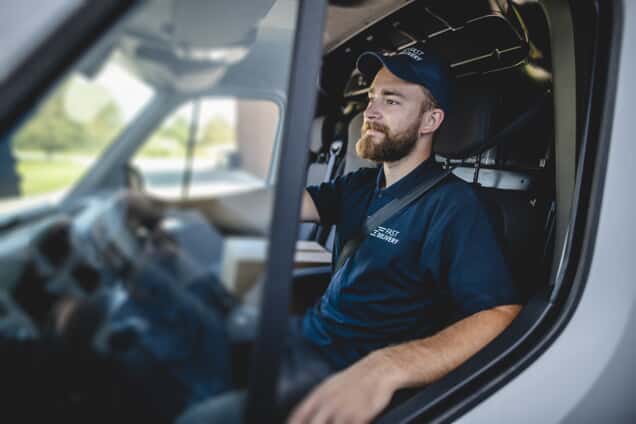You may or may not know that UPS drivers and many other commercial drivers don’t make left turns. Some claim they do this to save gas and increase speed. Yet that’s only part of the reason. Strange as it sounds is, there’s a very good explanation as to why professional drivers don’t turn left.
The Problem
Delivery agencies are focused on efficiency. Throughout the late 1900s, these companies spent a considerable portion of their efforts developing systems to deliver packages as quickly as possible. Then, in the early 2000s, companies like UPS toward an efficiency-oriented algorithm, rather than one based solely on speed.
They realized that the fastest way was not the most efficient or the safest or the most cost-effective way. After months of running tests and analyzing data, they found something that would change the delivery industry forever.
They realized that left turns are inherently dangerous. The National Highway Traffic Safety Administration (NHTSA) found that 20% of all car accidents occur during a left turn. Of those, unprotected left turns are most dangerous of all. The NHTSA estimates that left turns are 55x more dangerous than right turns.
A left turn requires that a driver goes against the flow of traffic in every direction. They leave themselves open to cross-traffic from two directions as well as oncoming traffic from directly ahead.
At a crowded intersection, that means they pass directly in front of 3 drivers in a single turn. If any of those drivers fail to yield, the driver turning left will like experienced either a side-impact collision or a head-on collision, two of the deadliest kinds.
A right turn is much safer by comparison. Drivers making a right turn only move across one lane, and they are moving with the flow of traffic. This makes it easier for oncoming drivers to change lanes quickly and reduces the risk for the turning driver. Everyone is safer in a right turn.
The Solution
After realizing that left turns were responsible for a startling number of accidents, lost time, and fuel waste, UPS and other major delivery companies made a significant change. They would rewrite their delivery algorithms to avoid left turns whenever possible. After the change, left turns in UPS trucks would drop to just 10% of all turns.
The Impact
As a result of cutting left turns, the UPS fleet reduced gas consumption by 10 million gallons in the first year, reduced their carbon emissions, and delivered more packages. They also reduced the rate of accidents per 100,000 driving hours.
Right turns aren’t only safer, they’re faster, and they use less fuel. On average, even someone who makes multiple right turns uses less fuel and reaches their destination faster than someone who makes left turns. This can make a huge difference, especially in cities with crowded intersections.
The Practicality
Reducing left turns might have a big impact at scale, but what does all this mean for the average driver? In practice, avoiding left turns helps drivers, especially those in crowded cities, prevent accidents and reach their destination faster.
In the city, many drivers feel forced to roll into the intersection (exposing themselves to traffic), and then make their turn seconds before the light turns red. Yet this method of making left turns puts them at a significant risk of a crash if cross traffic did not start from a complete stop.
Instead of forcing themselves to make aggressive left turns, drivers should instead consider making three right turns. This not only reduces the risk of an accident but may help them reach their destination faster. If fewer people made left turns, we’d see fewer accidents, traffic jams, and fatalities.
If you or someone you love suffered serious injuries in a car accident, we are here for you. If you’d like an experienced attorney from Delfino Green & Green to evaluate your case, please send us an email or call 415-442-4646.



